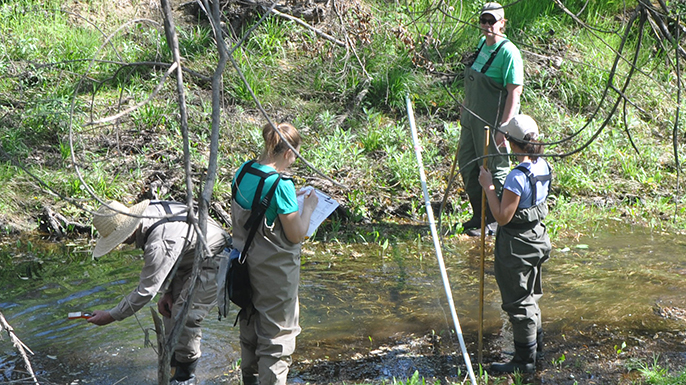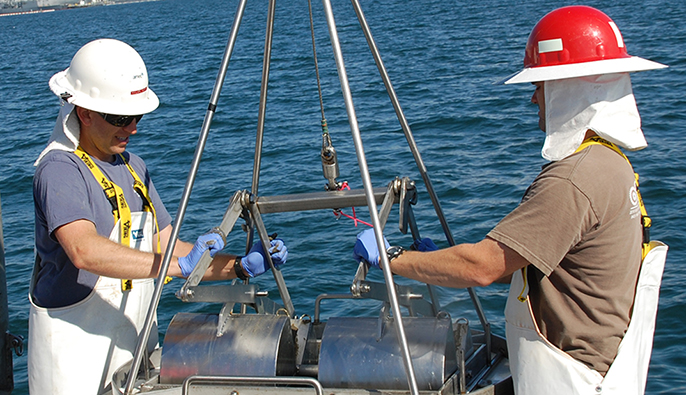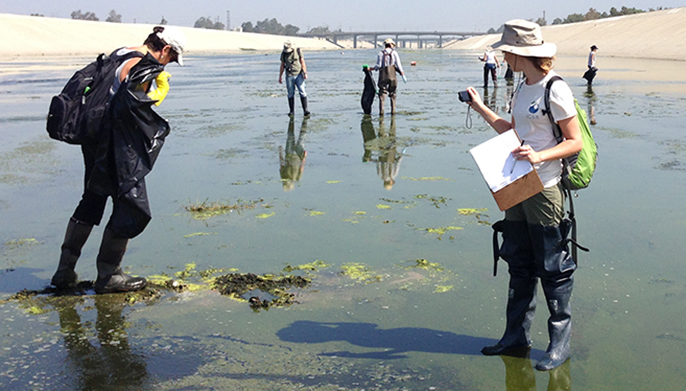![]() Regional monitoring is a type of environmental monitoring that enables the water-quality management community and its research partners to holistically examine the condition of aquatic ecosystems across time and space. Unlike site-specific monitoring that tends to focus on one narrowly defined area of management interest, regional monitoring calls on multiple agencies with overlapping responsibilities for aquatic ecosystems protection to pool their resources and work together on more expansive scientific investigations.
Regional monitoring is a type of environmental monitoring that enables the water-quality management community and its research partners to holistically examine the condition of aquatic ecosystems across time and space. Unlike site-specific monitoring that tends to focus on one narrowly defined area of management interest, regional monitoring calls on multiple agencies with overlapping responsibilities for aquatic ecosystems protection to pool their resources and work together on more expansive scientific investigations.
SCCWRP recognizes the strategic value of serving as a facilitator, coordinator and manager of regional monitoring programs in coastal Southern California. Not only does regional monitoring underscore SCCWRP’s commitment to bringing together diverse stakeholders to solve pressing environmental challenges, but regional monitoring also enables SCCWRP to test-drive next-generation methods, tools and techniques within the context of an operationally complex regional monitoring program.

Complement to site-specific monitoring
Southern California’s water-quality management community spends an estimated $50 million every year to monitor the ecological health of coastal waters and the watersheds that drain to them. Most of these monitoring efforts focus on the relatively compact areas that surround discharge sites, where treated wastewater effluent, land-based runoff and other discharges are released into receiving waters. This site-specific monitoring has provided water-quality managers with valuable insights into how human activities are impacting aquatic ecosystems, and how effective management interventions have been in mitigating and offsetting ecosystem impacts.
Regional monitoring is designed to pick up where site-specific monitoring leaves off. Through regional monitoring, participants examine a more holistic, comprehensive set of cumulative factors responsible for impacting and altering the region’s interconnected natural resources. Regional monitoring participants collaboratively design studies that answer fundamental, big-picture questions about the health of aquatic systems:
- Which water bodies are most polluted?
- Are human impacts to aquatic systems getting better or worse?
- How safe is it to swim at Southern California beaches?
- Is the sportfish in coastal waters contaminated?

Ancillary benefits of regional monitoring
SCCWRP plays a central role in facilitating development of study designs, standardizing study methodologies, and building consensus around findings and conclusions. From regional monitoring, program participants unlock a number of ancillary benefits, including:
- Regional monitoring serves as a platform for environmental laboratories across Southern California to standardize and calibrate their data collection and analysis methodologies. The quality-assurance and quality-control studies ensure that all data coming out of these labs – not just regional monitoring data – are comparable and of high quality.
- Regional monitoring helps build collegiality and trust within the water-quality management community. Participants agree upfront on which investigations they most want to conduct, and commit to taking prescribed courses of action depending on outcomes.
- Regional monitoring becomes a springboard for developing follow-up studies that have the potential to provide more insights into ecosystem health.
- Regional monitoring unites individual water-quality management agencies around shared messages grounded in sound science, enabling everyone – including SCCWRP – to speak with a common, unified voice that amplifies the resonance and impact of findings.

